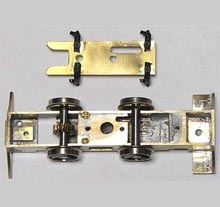

 Product Design
Product Design

 Rapid Prototyping
Rapid Prototyping
 CNC Prototyping
CNC Prototyping Rapid Prototyping
Rapid Prototyping Stereolithography Apparatus (SLA)
Stereolithography Apparatus (SLA) Selective Laser Sintering (SLS)
Selective Laser Sintering (SLS) Fused Deposition Modeling (FDM)
Fused Deposition Modeling (FDM) Laminated Object Manufacturing (LOM)
Laminated Object Manufacturing (LOM)
 Custom Molds - Plastic Molds
Custom Molds - Plastic Molds

 Plastic Molding
Plastic Molding

 Production Tooling
Production Tooling

Laminated Object Manufacturing(LOM)
 Introduction:
Introduction:
Laminated Object Manufacturing, which is often referred to by its initials LOM, is a rapid -prototyping process. It is based upon the subtraction of materials as successive layers are formed. This is in contrast to other rapid prototype technologies, which are based upon the addition of layers.
The model is formed from successive layers of heat-bonded sheet material, typically paper. The sliced CAD data is used to control a laser which cuts the perimeter (only) of each slice in the sheet material.
Interested or any question, please contact us.
Highlights:
- Layers of glue-backed paper form the model.
- Low cost due to readily available raw material
- Large parts: Because no chemical reaction is involved, parts can be exceptionally large.
- Accuracy in z is less than that for SLA and SLS.
- Dimensional accuracy is slightly less than that of Stereolithography and Selective laser sintering but no milling step is necessary.
- Models should be sealed in order to exclude moisture.
- Not as commonly-used as SLA or SLS.
Applications:
- Limited number of prototypes needed (1-10).
- Concept Models
- Functional testing
 We are constantly looking for new products in order to grow our business and Invention Home has enabled us to streamline that process much more quickly.
We are constantly looking for new products in order to grow our business and Invention Home has enabled us to streamline that process much more quickly. Marsha Dunmyre
CA, U.S.A
BROWSE MORE
Cool Prototyping provides "one-stop" product design service: rapid prototyping, plastic molds, custom molds, production tooling and plastic molding.
Cool Prototyping Copyright 2008-2009 © All Rights Reserved. Rapid Prototyping
Cool Prototyping Copyright 2008-2009 © All Rights Reserved. Rapid Prototyping

